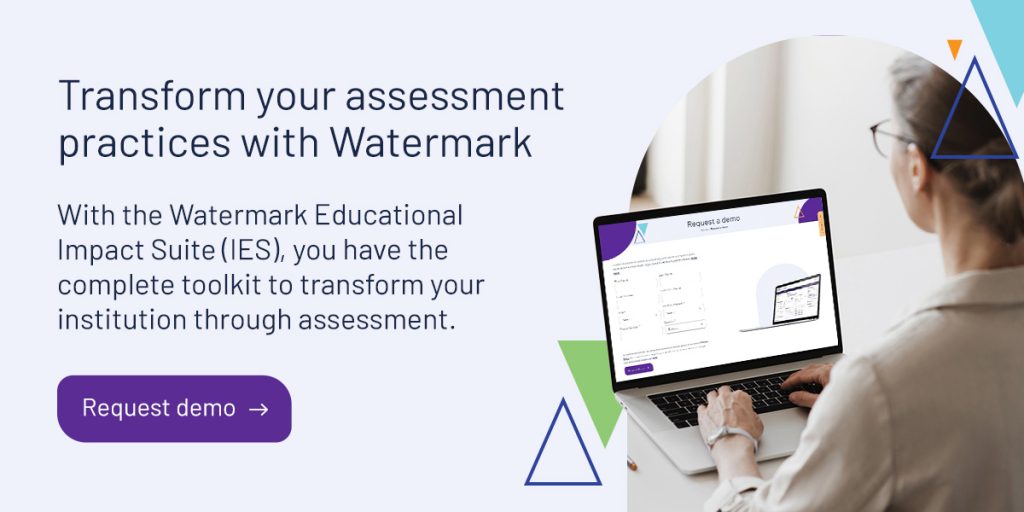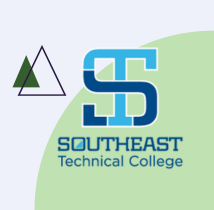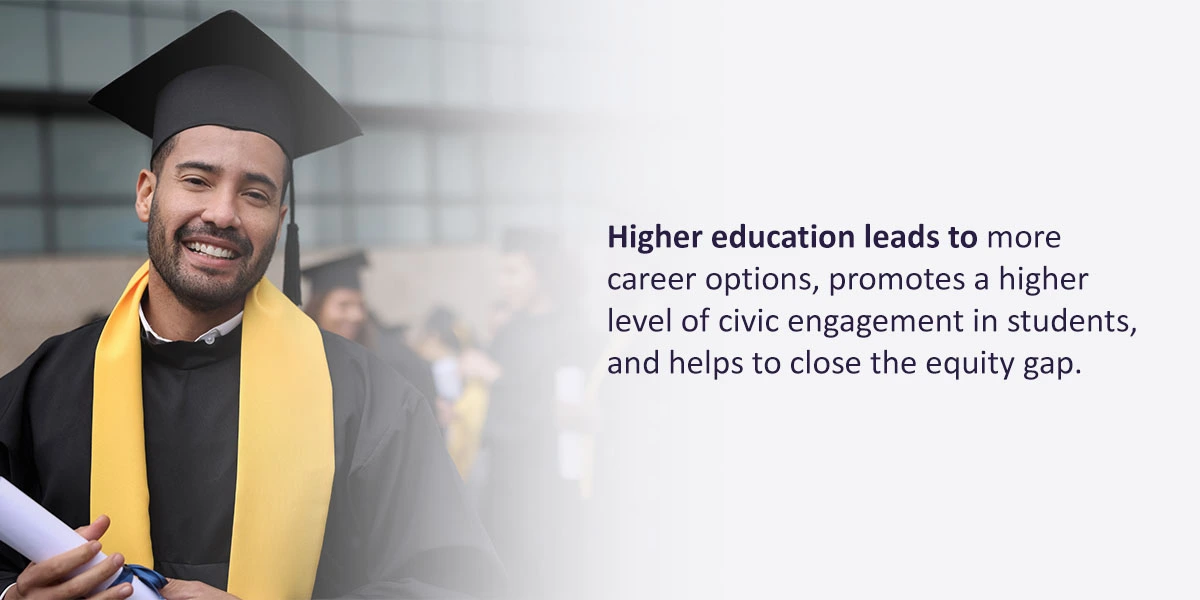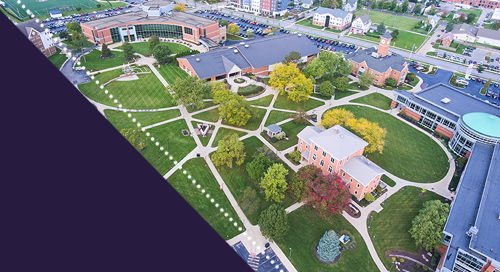Assessment in higher education drives continuous improvement. It ensures that learning is tested, encouraged, and understood. Each assessment gives institutions valuable data on programs that work and those that need improvement, allowing institutions to focus their efforts on the quality of education.
To drive meaningful change, you need a comprehensive view of student performance, including personal and professional development. This information can be used to prepare students for their careers, boost engagement, and focus on retention.
Innovative assessment practices can help you achieve these goals. They provide multiple viewpoints on success and engagement and give you the tools to handle the demands of modern students.
Understanding innovative assessment practices
Traditional assessment faces many challenges. Outdated technology can lead to duplicative efforts, and siloed data can make getting a holistic view of student performance challenging. Technology is tackling these challenges, making tracking innovative assessment practices like collaborative and culturally responsive assessment easier.
Innovative assessments provide a comprehensive understanding of student abilities. They allow students to prepare better for their careers and give higher education institutions a clear direction for continuous improvement. The more qualitative and quantitative data you have on overall student performance, the better you can adjust your programs. You can also refine your student support services to boost retention and support student success.
Some of the many benefits of new assessment practices for students include:
- Aligning assessments with learning outcomes: When student assessments are entirely academic, students often focus on the information they think will be in the assessment at the expense of what’s needed in practice. Innovative assessment practices focus on the whole student. They consider academic and practical outcomes and, ultimately, better prepare students for their careers.
- Enhancing student engagement and motivation: Innovative assessments provide data you can use to create meaningful learning experiences. They support personalized learning and support, which keeps students engaged and thriving. Engaged students are more likely to complete their studies at your institution, which means innovative assessment can boost retention.
- Supporting diverse learning styles and needs: Innovative assessment data allows faculty to examine their teaching practices and determine which produces the best results for specific students or student groups. What works for one student may not work for another, and faculty can use assessment to find the best methods for engaging with diverse groups.
- Creating high-quality student experiences: When assessments provide actionable data, your institution can adopt a genuine posture of continuous improvement. You can make data-driven decisions that benefit students in every aspect of their academic journeys, creating the highest quality learning experience.
7 assessment practices to transform your institution
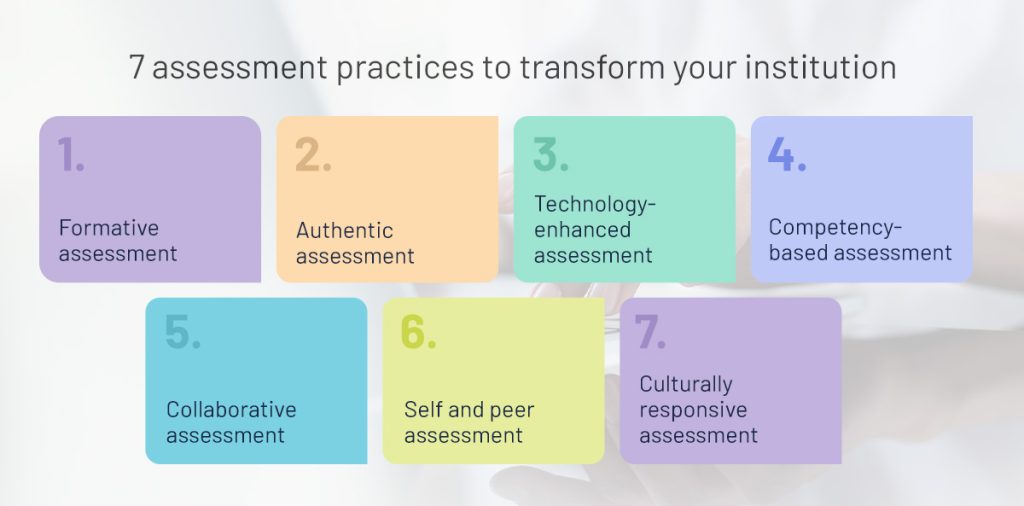
As technology evolves, we have access to different forms of assessment. Each focuses on a different aspect of the student experience. When combined, they provide holistic and actionable improvement opportunities for institutions. New assessment practices continue to transform education, but some of the most effective benefit students, faculty, and administrators. They include:
1. Formative assessment
Formative assessment is ongoing and informal. It helps faculty monitor student progress in real time and adjust when necessary. This assessment provides immediate feedback, guiding and improving each student’s learning experiences while keeping them engaged. It remains one of the most effective ways of shifting the focus away from grading and toward supporting their holistic development.
Many innovative approaches to formative assessment exist, including strategic questioning and analyzing the work of students. These strategies provide faculty with valuable insights into student progress and understanding, allowing for targeted and personalized feedback and teaching modifications.
Formative assessment allows students to improve continuously throughout their education. It helps them understand their strengths and growth areas, laying the foundation for a personalized learning process. It’s also an excellent method for institutions to gather data on their teaching processes. You can use it to gather insights into student attitudes, skills, learning styles, and challenges. With this information, you can tailor your instruction to meet the diverse needs of students.
2. Authentic assessment
Authentic assessments are realistic assessments that simulate relevant real-world tasks. They measure student performance, competence, and the transferability of their knowledge and skills. They may include role-play, demonstrations, or portfolios. Authentic assessments help students engage with their learning and understand the relevance of their course material to their future careers.
This assessment can enhance each student’s critical thinking and problem-solving, and it helps students analyze and apply what they have learned to their intended careers. Instead of studying and reproducing information, students can get creative. Because they involve real-world tasks, they are more engaging and motivating for students. They also provide specific and actionable information about what students understand and what they still need to learn. This data is invaluable when mapping your curriculum and making decisions to improve course quality.
What could Watermark do for your institution?
3. Technology-enhanced assessment
In simple terms, technology-enhanced assessment involves using technological tools to conduct assessments. However, the term encompasses far more than that. It plays a critical role in personalized, student-centered learning and lets faculty pinpoint individual challenges students face and address them in real time.
One of the principal benefits of this assessment type is that it maximizes the quality of interaction between students and their questions. You can present information in various formats, including video, text, and graphics, which cater to different learning styles. Technology-enhanced assessments often provide a genuine environment where students can apply their knowledge in real-life scenarios.
One of the primary benefits of technology-enhanced assessment for institutions is access to student data. With real-time information, you can inform decision-making and address improvement opportunities during learning instead of after. By the time students reach the end of a course, they will have enjoyed many opportunities to improve along the way.
The right course evaluation tool can simplify the surveying process and convert results into actionable next steps. It can also help you inspire curricular and program enhancements by including students’ feedback in your annual assessment cycles. With the right software on your side, you can take advantage of quality feedback, deeper insights, and instant results.
4. Competency-based assessment
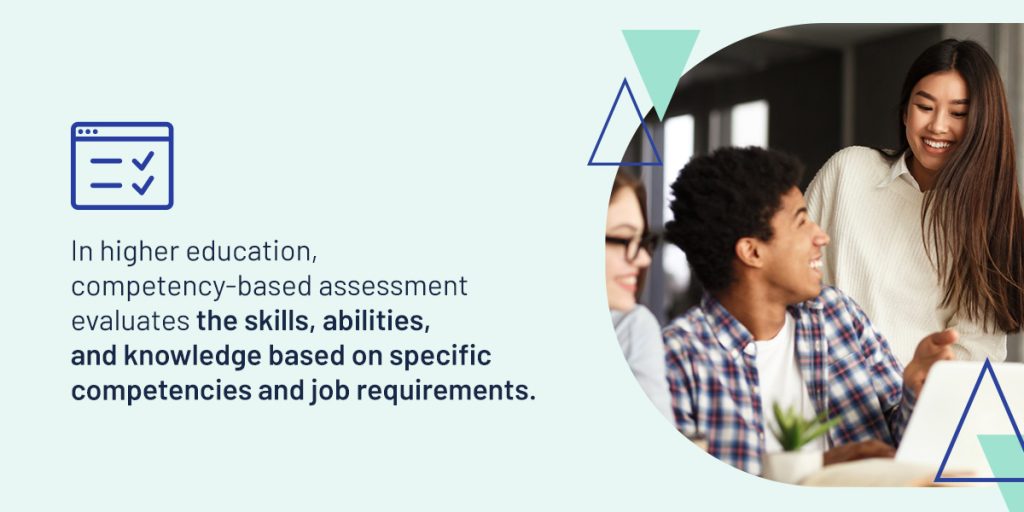
If a person is competent, they have the knowledge, skills, and social ability to fulfill their roles. In higher education, competency-based assessment evaluates the skills, abilities, and knowledge based on specific competencies and job requirements. For example, faculty may ask students to submit videos or solve a career-specific problem. These assessments help faculty determine whether students can synthesize and use information meaningfully and practically.
These assessments offer a holistic view of each student’s learning progress and attitudes, which faculty can use to engage them and meet their unique needs. It also offers practical experience that molds the next generation of leaders through real-world experience, which is traditionally unavailable in classroom settings.
The better your institution can prepare students for meaningful careers, the more likely they will enroll. Competency-based assessment can help you attract diverse students and gain detailed insights into their progression. The data you gather from these assessments helps you understand program effectiveness and identify opportunities to make them more relevant in the real world.
5. Collaborative assessment
Collaborative assessment involves reciprocal feedback among faculty and students and between student groups. It takes many forms, including verbal feedback, co-constructing rubrics, practice evaluations and group grading. While it may or may not include a grading element, it has a proactive, planned structure.
One of the clear benefits of collaborative assessment is engaging students and empowering them to guide their learning. Students gain the knowledge and experience of their peers and faculty — a diverse group that supports critical thinking and cultural competence. It also gives institutions a vehicle to measure student engagement through participation in class discussions and other group activities. Faculty can use this information to identify disengaged students and take the necessary steps to get them back on track to course completion.
6. Self and peer assessment
Self- and peer assessment means having students critically reflect on, record the process of, and sometimes suggest grades for their own or their peer’s learning. It encourages students to take responsibility for their learning. In many cases, it’s also more effective than evaluator assessment if you conduct it anonymously through online platforms.
These assessments promote healthy self-reflection — an invaluable tool in the working world. They are also beneficial in calculating final grades, as they add a sense of objectivity to the process. They also have the potential to improve academic performance significantly. Again, these assessments encourage student engagement.
Students actively assess their work and seek input from others. They can only do this when engaged in the course material and forming meaningful connections. In this way, self-and peer assessment promotes cultural competence, as students must learn to understand diverse perspectives to provide fair and accurate assessments.
7. Culturally responsive assessment
Culturally responsive assessment eliminates bias and allows students to account for their diverse backgrounds. They can bring their cultural references and fluencies into demonstrations of achievement and provide a link between their everyday cultural experiences and test items.
The benefits of culturally responsive assessment are clear. It allows your institution to develop a truly diverse and supported student body, which boosts engagement and retention. It helps faculty understand diverse groups and their cultural differences and supports the development of culturally relevant curricula.
Institutions can use these assessments to measure the trajectories of students with diverse backgrounds over time. Then, identify opportunities to improve their culturally responsive teaching. High dropout rates among diverse student groups indicate that teaching programs require improvement. Assessments focusing on class and activity participation rates can help identify classes lacking culturally responsive elements.
Integrating software solutions into innovative assessment practices
Assessments generate massive amounts of data, which can transform the way your institution approaches student success. However, the data is only meaningful if you can synthesize it into actionable reports. Purpose-built software solutions bridge the gap between data and improvement. They help you use data to inform decision-making, engage students and provide them with the resources they need to succeed in higher education and beyond.
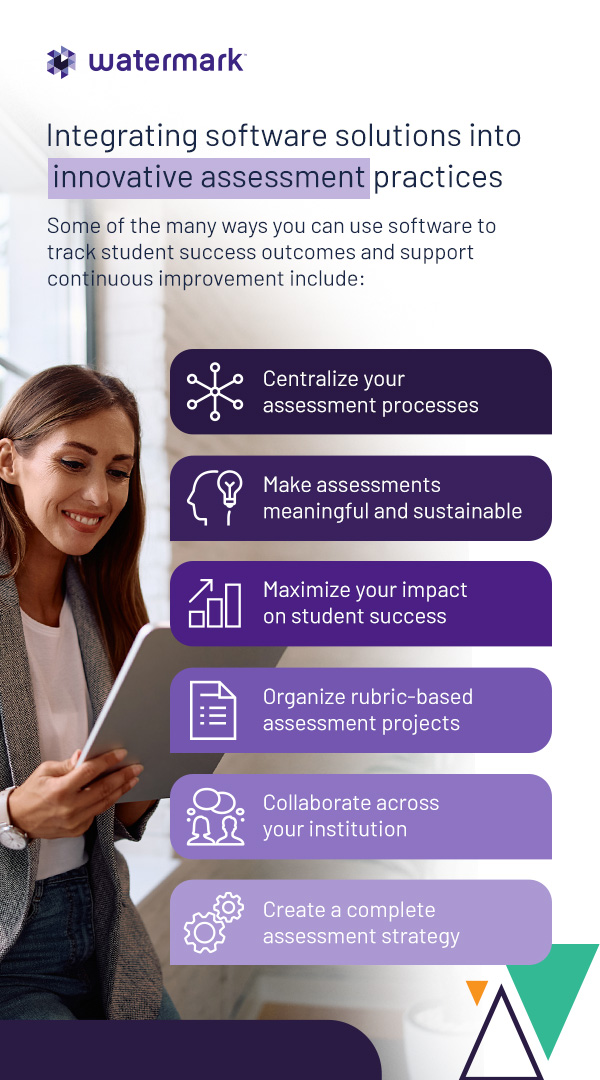
Some of the many ways you can use software to track student success outcomes and support continuous improvement include:
- Centralize your assessment processes: Assessment requires your faculty and other staff to compile direct and indirect evidence of student learning. A detailed and holistic view of performance lets you identify what works and focus on improvement opportunities. Software solutions eliminate data silos and give you the complete picture of your institution’s performance. You can measure quality across your institution from a secure, insightful hub of assessment data.
- Make assessments meaningful and sustainable: Students can only benefit if they can pinpoint areas to apply their skills and knowledge in the future. The software allows your faculty to compare past assessments and identify areas where students excel or encounter challenges with the material. You can also use past assessments to compare the growth levels and identify which strategies have been effective. Reports on dynamic and standard outcomes let you streamline data and compare assessments against rubrics to make assessments more meaningful and sustainable.
- Maximize your impact on student success: Software solutions take you beyond graduation rates and give you the complete picture of your institution’s effectiveness. You can also use assessment data to get early alerts when at-risk students veer off course so you can intervene and get them back on track before it’s too late.
- Organize rubric-based assessment projects: Educational software solutions provide a single place to monitor every aspect of your assessment projects. You can access each project, the outcomes you’re measuring, and their standardized rubrics.
- Collaborate across your institution: With all your data in one place, faculty, evaluators, administrators, and leaders can all see the same picture. You can collaborate and ensure your assessments align with the learning outcomes of each course, using assessment data in real time to make decisions.
- Create a complete assessment strategy: A complete software solution lets you integrate your assessment results with curriculum or accreditation. You can create a holistic assessment strategy for your institution from one central platform.
Challenges and solutions for implementing new assessment practices in higher education
Although the benefits of innovative assessment practices are clear, you may face some challenges when integrating them into your existing setup. For example, students familiar with summative assessment may find other assessment types challenging and resist change. Other challenges include ensuring inclusive assignments to maintain equity and resistance to group work. Faculty may also find new assessments challenging, especially with a lack of training. Time management is also a concern — faculty may spend more time mastering new assessments than engaging with students.
You can combat many of these challenges with the right approach. Some solutions to streamline innovative assessment implementation include:
- Provide professional development programs: Faculty buy-in is essential when integrating new assessments. To remove friction from the adoption process, train your teams on new tools and involve them in your strategic planning.
- Incorporate user-friendly technology: Software solutions make assessments more accessible for students with diverse needs. They also let you automate some assessment aspects, saving time and resources for faculty and students. A user-friendly interface simplifies adoption, adds interactivity, and boosts collaboration.
- Involve students: As assessments support the student experience, increasing student motivation and ownership of their learning makes sense. Let students collaborate with faculty and their peers to modify assessments to better meet their needs. They can provide feedback on your assessment practices to identify improvement opportunities.
Transform your assessment practices with Watermark
Various types of innovative assessment can improve student and institutional outcomes, provided you have the data to inform change. With the Watermark Educational Impact Suite (EIS), you have the complete toolkit to transform your institution through assessment. Our integrated hub of tools provides the insights you need to maximize your educational impact.
Streamline and strengthen your assessment practices with qualitative and quantitative data to get the big picture, measure your effectiveness, and communicate it to stakeholders from one system. Schedule a demo and transform your assessment practices today!
